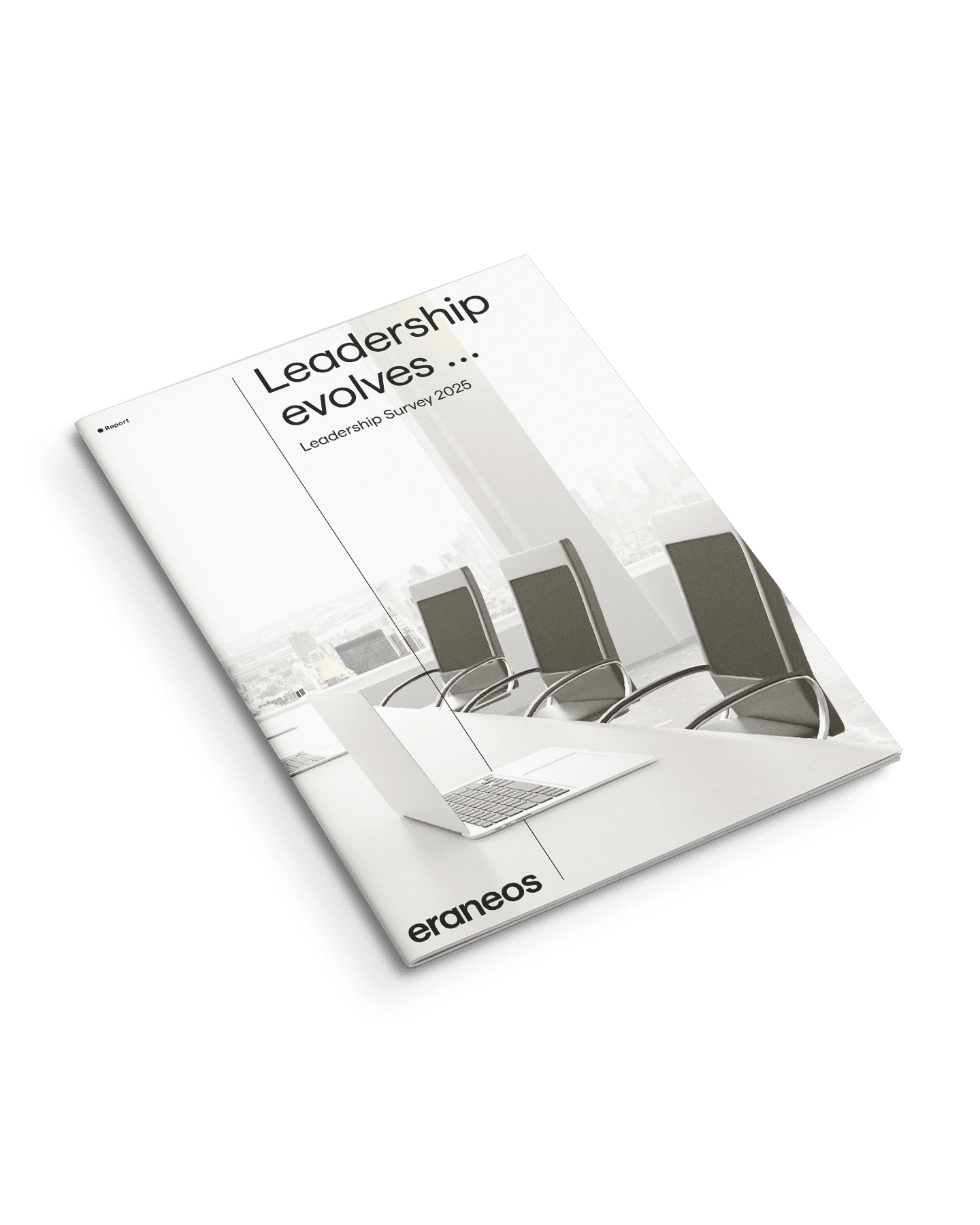About this series: In 2024–2025, Eraneos conducted research into the behaviors of effective leaders. Based on the insights gathered, we created a five-part article series exploring what today’s leaders need to truly make an impact.
In this fifth part, we focus on another essential leadership behavior highlighted by our research: the ability to embed a habit of continuous improvement into daily work. Eraneos carried out research into key leadership behaviors for 2024–2025. The results clearly show where leaders must grow to guide their organizations through complex transformation. One pivotal capability stands out: creating an environment where continuous improvement becomes second nature, driving lasting progress and making teams, and their organizations, more effective every day.
Leaders should embed continuous improvement into daily routines for themselves and their teams, by identifying and addressing systemic problems. When this happens, many operational issues are tackled, products and services improve, and the work environment becomes better for everyone. Still, our research shows that just over half of employees feel leaders do this effectively. The conclusion is clear: leaders must be more engaged, open about challenges, and active in supporting daily improvement efforts. Leaders need to promote, participate in, and acknowledge continuous improvement so that it becomes a genuine part of the culture.
If anything in organizations can claim the title of ‘ultimate aspiration’, it is continuous improvement. Like the pursuit of this goal, the path can be long and full of setbacks. Every organization wants continuous improvement to become second nature, but few have actually managed to make it happen. Even though the journey is challenging, it is achievable; we have all seen examples where it works.
What do the best organizations do?
Let’s look at those who succeed. Organizations thriving on continuous improvement share some key habits:
- They weave improvement into their everyday behaviors rather than treating it as an occasional project.
- Toyota is a classic example, relying on metrics and root cause analysis to identify waste and inefficiency. They use frameworks such as Lean, Six Sigma, Agile, or PDCA to guide disciplined improvement. GE famously used Lean Six Sigma to transform its business from the 1980s onward.
- They tap into the collective intelligence of their people, using feedback systems and incentives. 3M’s ‘15 percent rule’ and Google’s ‘20 percent time’ for self-initiated innovation are well-known examples.
- These companies act quickly on customer feedback, are not afraid to test, fail, and try again, and they balance standardized work with the ability to change processes when needed.
- Above all, their leaders lead by example. One of their most important habits is to go and see for yourself. Improvement begins with seeing things as they truly are.
In essence, continuous improvement means addressing the real and recurring problems your organization faces, whether big or small. Much of it is familiar to most companies, but a few consistently succeed where others stall. The difference is often time and consistent attention.
"Continuous improvement becomes truly powerful only when it’s embedded in everyday habits, not just ambitious plans."
Why doesn’t it happen more often?
The most common reason for not working on continuous improvement is a lack of time. In reality, this is not a reason, but an excuse. Improvement is what helps you create time. If you look closely at your teams, you’ll notice they already tweak and adjust their environment. The real issue is usually that improvements are:
- not clearly guided toward company goals,
- not recognized as improvements or tracked for impact,
- not shared or scaled beyond the individual who made the change.
This is the moment for leadership to step in:
- As a leader, be careful not to let improvement time be sacrificed for the next urgent task.
- Improvement work is just as important as any other daily task; it should not be seen as extra or optional.
- Leaders must make clear this is primary work, and not forget to improve themselves, too. Take time to tackle problems together with your team every week.
Which improvements deserve your focus?
As you walk around your organization, you will see countless opportunities for improvement. Your job is not to solve them all yourself, but to help teams recognize and tackle their own improvements. The real leadership challenge is to understand why certain improvements are needed. Is there something in the design or management of your organization that makes these improvements necessary? Continuous improvement is about finding gaps and then closing them, intentionally and methodically.
How do you approach continuous improvement?
At Eraneos, we help organizations develop this as a real habit, using a simple and practical approach.
First, build a regular structure for improvement:
- Each team should have a weekly improvement meeting of one hour.
- Record all problems and improvement ideas on a physical or digital board.
- Triage improvements by identifying simple ones, where both cause and solution are clear, and making sure at least one is tackled every day.
- More complex ideas, where the cause or solution are not obvious, go on a separate list to be investigated further. Use a clear problem-solving method such as the Five Whys, DMAIC, of A3.
- Reserve time for teams to work on these tougher improvements.
The second step is to maintain this structure and routine:
- Make sure the improvement meeting is not skipped.
- Keep the list of ideas current. If an idea has been there for longer than six weeks, remove it.
- Check whether improvements deliver actual benefits, and coach your team to implement solutions that make a real difference in practice.
- Celebrate achievements so your team sees that progress is valued.
The third step is to keep improving your own routines and systems. Time often feels like the enemy of improvement, but the real win as a leader is to make sure people always focus on improvements that save time, then use the time gained for the next improvement. Piece by piece, you build a self-sustaining process. The key to success is within reach for those who make continuous improvement a habit and have the courage to begin. Now you know what to do. The next move is yours.

Leadership survey 2025: Leadership evolves …
Discover the latest leadership trends. Learn how modern leaders navigate technology, change, and people-centered transformation. Request the report now!




